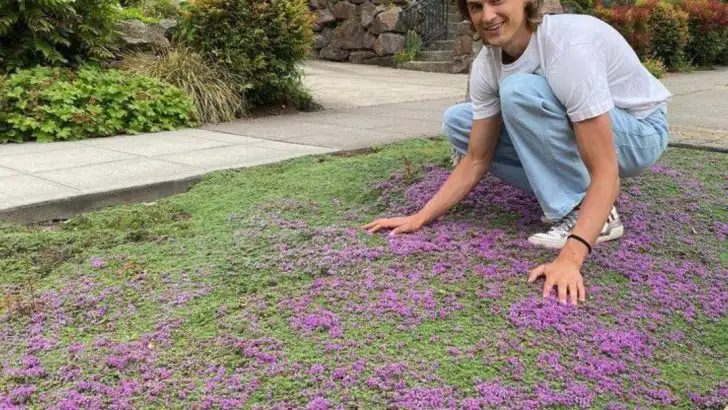Lawns can be high-maintenance—and surprisingly unproductive. If you’re ready to trade your turf for something greener (and easier), certain perennials offer a smart, low-effort alternative. These plants form dense, lush coverage that can outperform grass in both beauty and function.
Even better, they don’t rely on constant feeding to thrive. These hardy perennials are naturally resilient and soil-adaptable, meaning you can skip the fertilizer without sacrificing growth or color.
In this article, we highlight 12 perennials that not only replace lawn beautifully, but also grow strong with zero fertilizing—a win for your schedule, your budget, and your soil.
Creeping Thyme
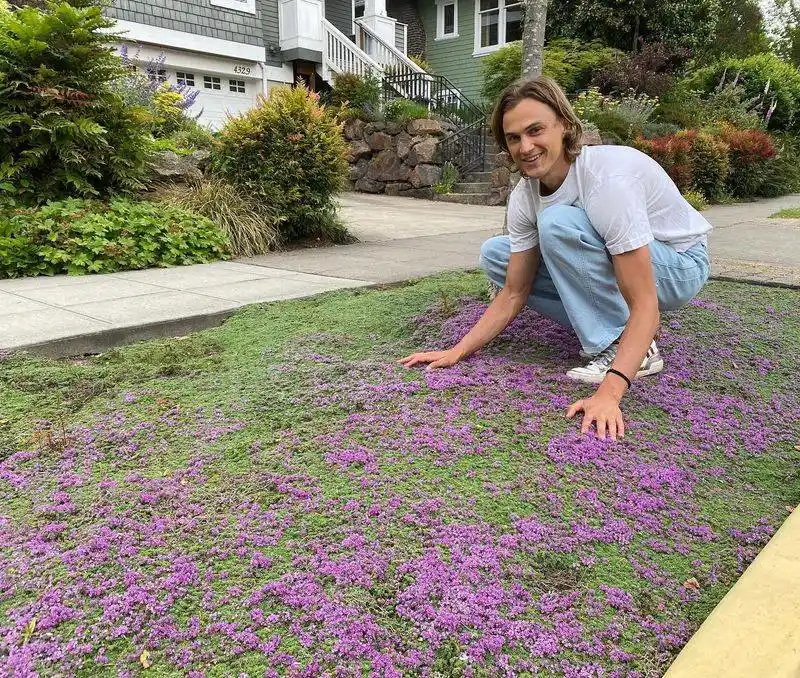
Creeping Thyme is a versatile ground cover that adds a fragrant touch to gardens. Its resilience to foot traffic makes it ideal for pathways. In summer, vibrant purple blossoms attract bees, creating a lively garden scene.
Thyme thrives in well-drained soil and sunny spots, requiring minimal care. Its aromatic foliage releases a pleasant scent when stepped on, enhancing sensory experiences in your garden.
This plant is not only decorative but also culinary, as its leaves can be used in cooking. With a history rooted in ancient traditions, thyme symbolizes courage and strength.
Irish Moss
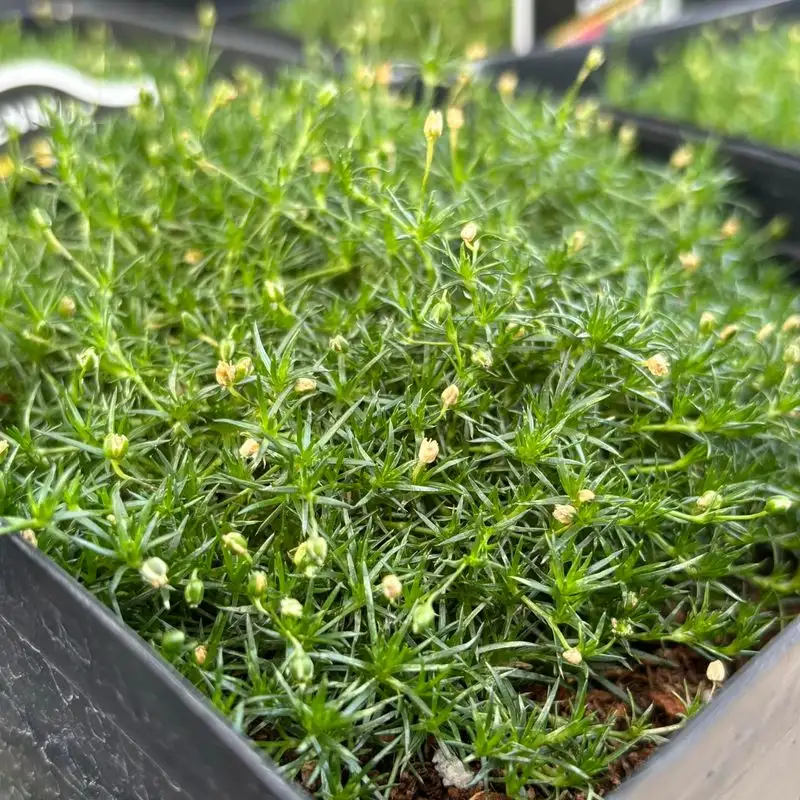
Irish Moss creates a soft, velvety carpet that thrives in moist, shady areas. Its tiny white flowers add subtle elegance to garden paths and rock gardens.
This hardy perennial prefers well-drained soil and provides a lush appearance with minimal effort. It’s perfect for filling gaps between stepping stones, offering a plush feel underfoot.
Its low-growing nature makes it an excellent lawn substitute, reducing maintenance while enhancing your garden’s aesthetic. Irish Moss brings a touch of Ireland’s natural beauty to any landscape, evoking a sense of tranquility and harmony.
Blue Star Creeper
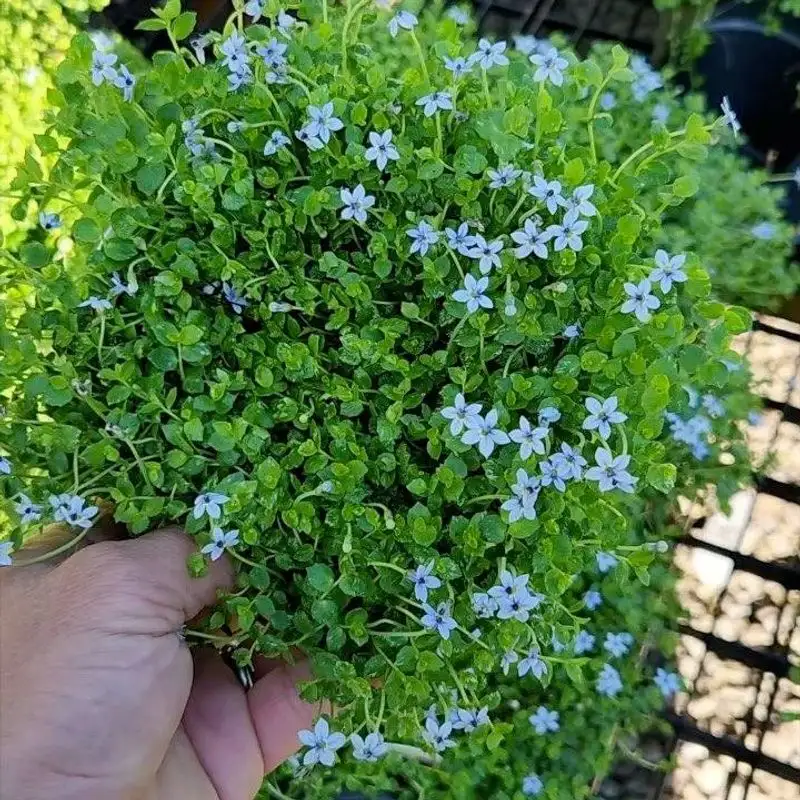
With its delicate blue flowers, Blue Star Creeper offers a charming alternative to traditional lawns. This low-growing plant spreads quickly, creating a dense carpet that can withstand light foot traffic.
Ideal for filling spaces between stepping stones or as a lawn replacement, it thrives in both sun and partial shade. Its low maintenance nature makes it a favorite among gardeners seeking simplicity.
This plant’s subtle yet striking appearance adds a gentle touch to any garden setting. Blue Star Creeper is more than just a ground cover; it’s a visual delight.
Corsican Mint
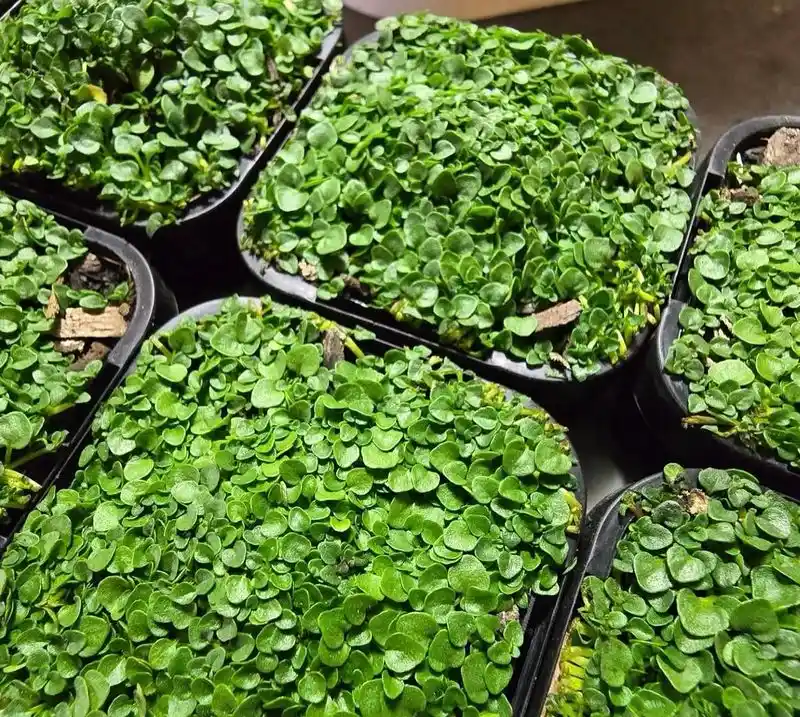
Corsican Mint is a mint-scented ground cover that’s perfect for shaded areas. Its tiny, round leaves form a dense mat, releasing a refreshing mint aroma when touched.
Ideal for shady garden paths or between pavers, it prefers moist, well-drained soil. While it doesn’t tolerate heavy foot traffic, its beauty and scent make it a sought-after choice for specific garden spots.
This perennial not only beautifies spaces but also adds a sensory dimension to gardens. Corsican Mint is a delightful addition to any garden, offering both aesthetic and aromatic appeal.
Clover
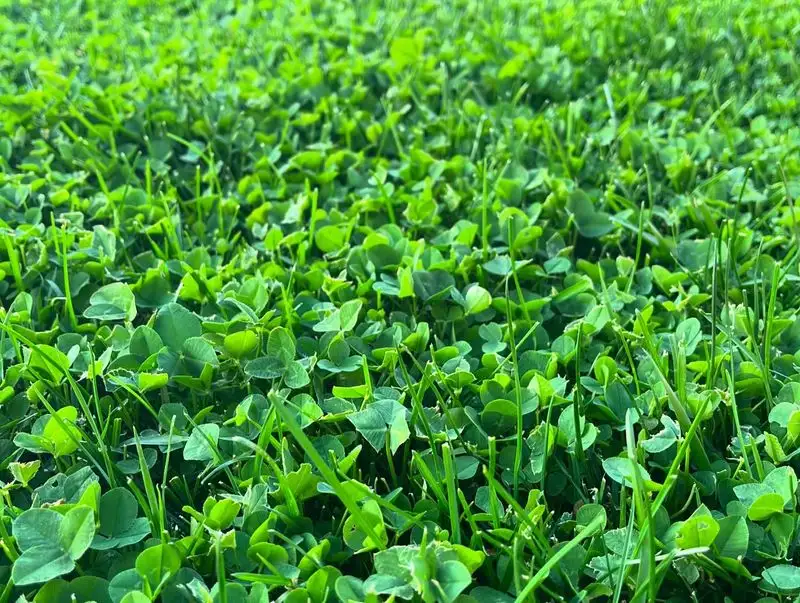
Clover, often seen as a lucky charm, serves as a hardy lawn substitute. Its vibrant green leaves and occasional white flowers create a lush, inviting ground cover.
This perennial thrives in poor soil conditions, requiring minimal maintenance. It naturally enriches the soil with nitrogen, eliminating the need for additional fertilizers.
Beyond its beauty, clover is drought-resistant, making it an eco-friendly choice for gardens. This plant is more than just a ground cover; it’s a practical and attractive lawn alternative that heralds good fortune.
Bugleweed (Ajuga)
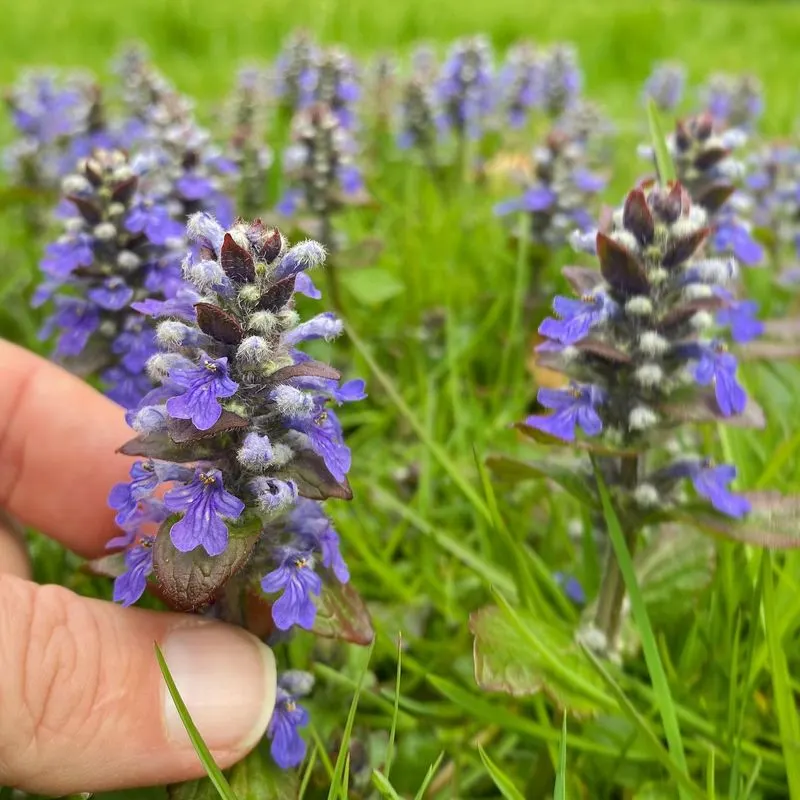
Bugleweed, or Ajuga, is a resilient ground cover with glossy foliage and striking blue flower spikes. Perfect for shady areas, it spreads quickly, filling bare spots with vibrant color.
Its ability to thrive in various soil types makes it a versatile choice for gardeners. Ajuga’s low maintenance nature and rapid growth make it ideal for covering large areas.
Alongside its visual appeal, this perennial supports pollinators, attracting bees and butterflies. Ajuga’s unique texture and color make it a standout in any landscape, offering beauty and practicality.
Liriope
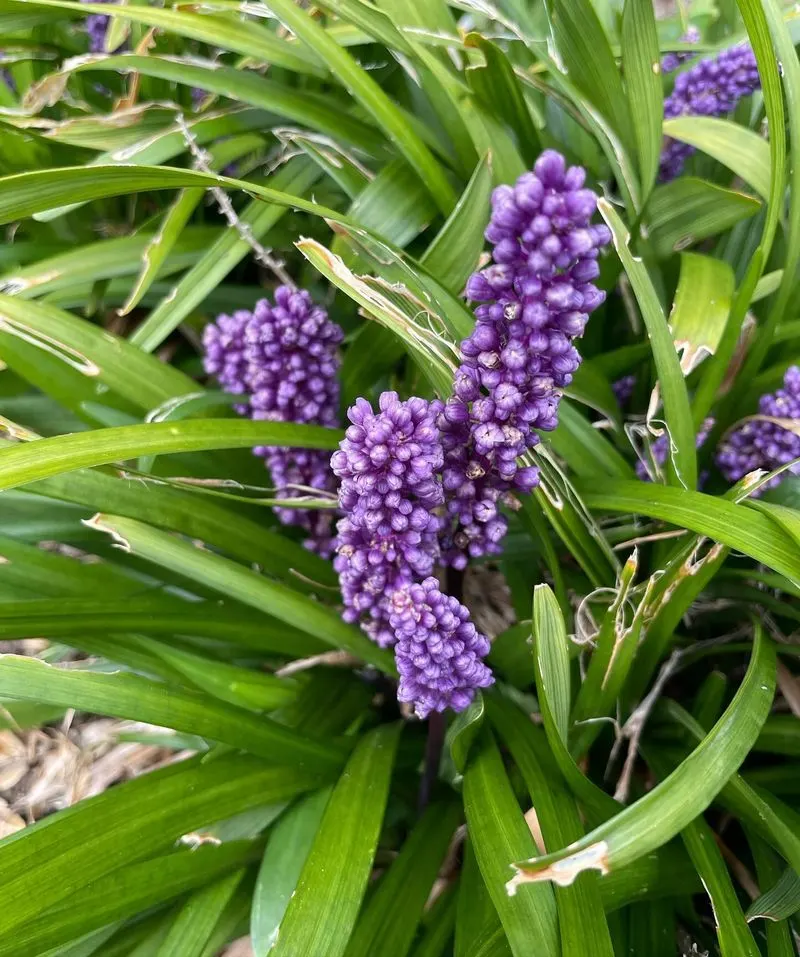
Liriope, known for its grass-like leaves and purple flower spikes, adds elegance to any garden. Its adaptable nature allows it to thrive in sun or shade, making it a versatile choice for borders and ground cover.
This perennial’s robust growth and low maintenance requirements make it a garden favorite. Liriope’s ability to suppress weeds adds to its appeal, offering both beauty and practicality.
Beyond aesthetics, it provides structural interest to gardens, with its graceful foliage waving gently in the breeze. Liriope stands out as an enduring choice for garden landscapes.
Mazus Reptans
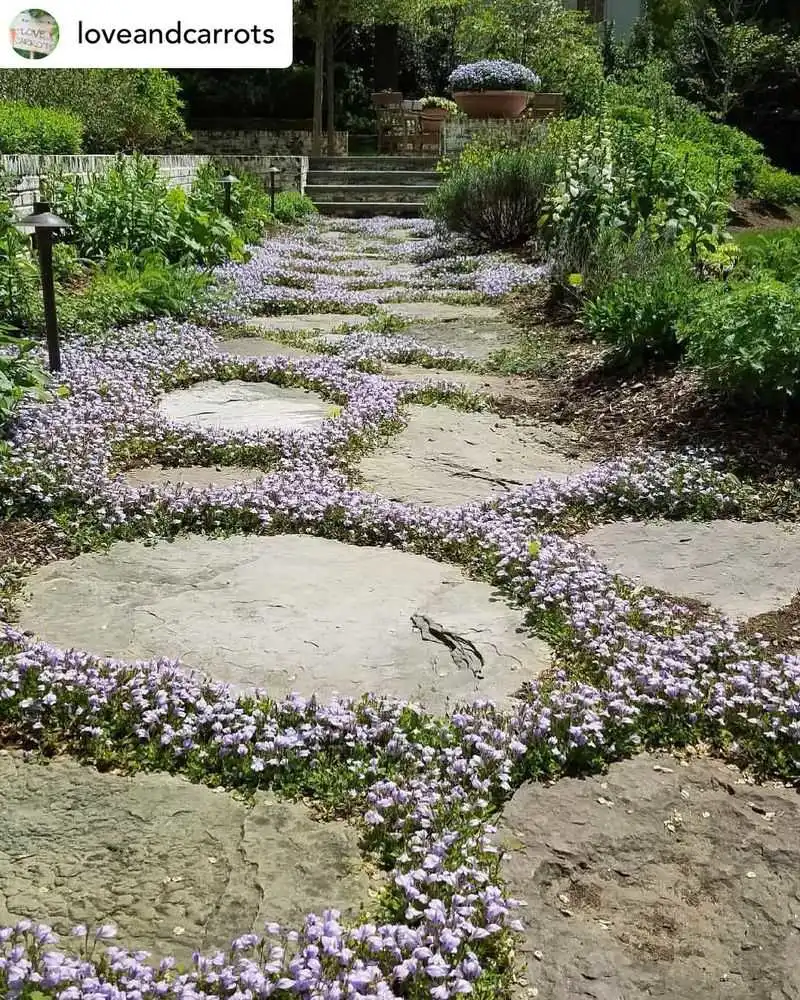
Mazus Reptans is a vibrant ground cover, perfect for filling gaps between pavers or as a lawn replacement. Its small, purple flowers and lush foliage create a colorful carpet that brightens garden spaces.
Thriving in moist, well-drained soil, it spreads quickly, requiring little care. Mazus Reptans’ ability to withstand light foot traffic makes it a practical choice for garden paths.
This perennial offers a burst of color and texture, enhancing garden aesthetics. Its low-growing habit and resilience make it an ideal choice for gardeners seeking beauty and ease.
Sedum
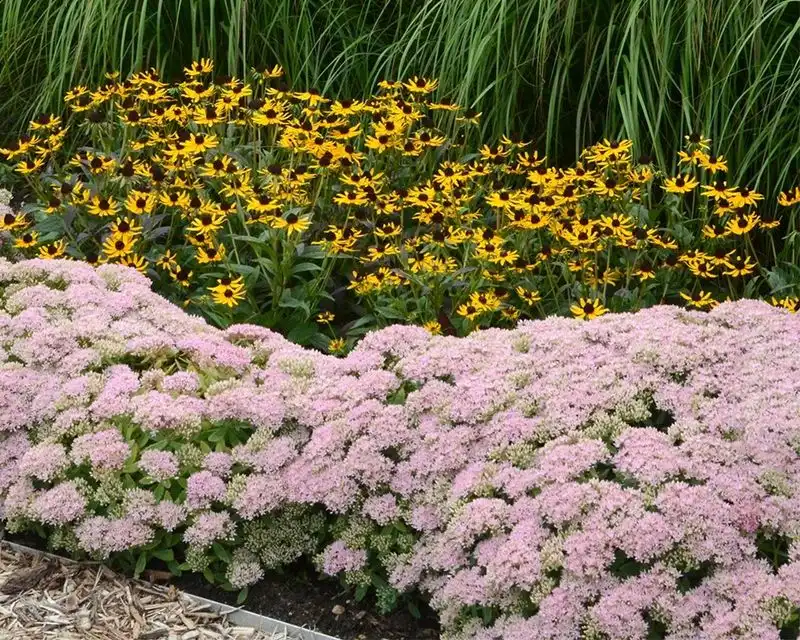
Sedum, with its fleshy leaves and vibrant blooms, thrives in sunny, rocky areas. This succulent ground cover requires minimal water, making it perfect for xeriscaping and drought-prone regions.
Its variety of colors and textures adds visual interest to gardens, creating a dynamic landscape. Sedum’s resilience and low maintenance needs make it a favorite for eco-conscious gardeners.
Beyond its beauty, Sedum attracts pollinators, supporting biodiversity. This perennial is more than a ground cover; it’s a testament to nature’s adaptability and beauty, offering both style and substance.
Sweet Woodruff
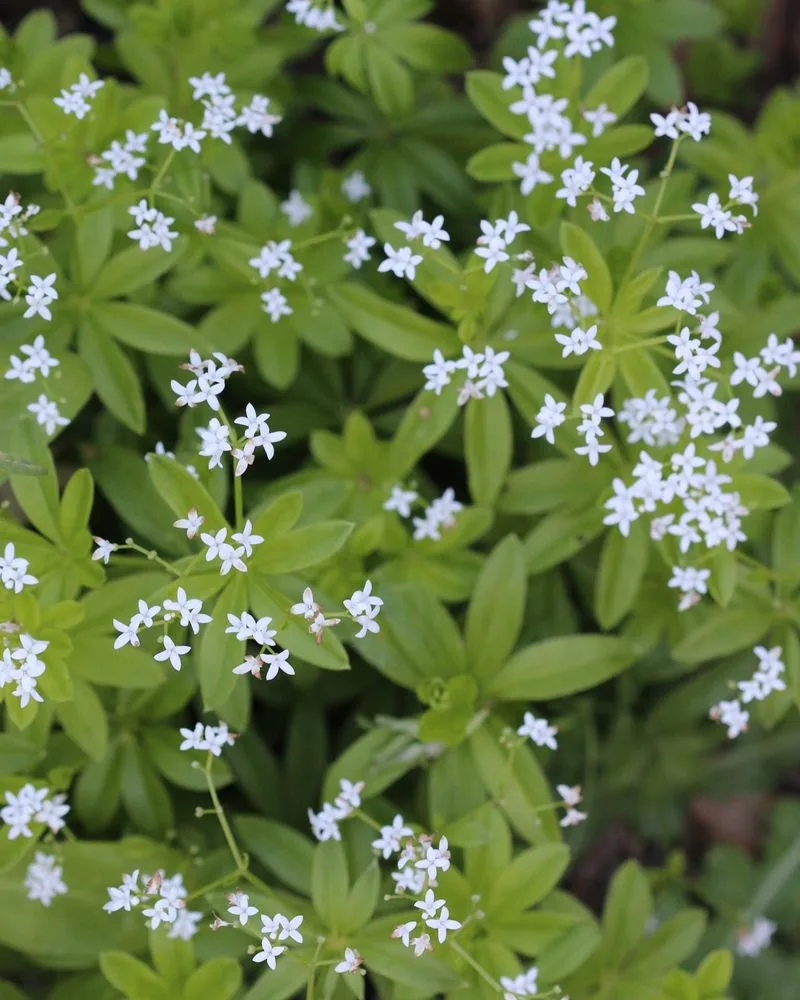
Sweet Woodruff, with its delicate white flowers and whorled green leaves, adds charm to shady garden areas. Known for its sweet scent, it releases a hay-like fragrance, especially when dried.
This perennial thrives in moist, well-drained soil, spreading quickly to form a dense carpet. It’s perfect for woodland gardens or borders, providing a soft, textured appearance.
Beyond its beauty, Sweet Woodruff has historical uses in aromatherapy and herbal medicine. This plant is more than just decorative; it’s a fragrant and functional addition to any garden.
Veronica ‘Georgia Blue’
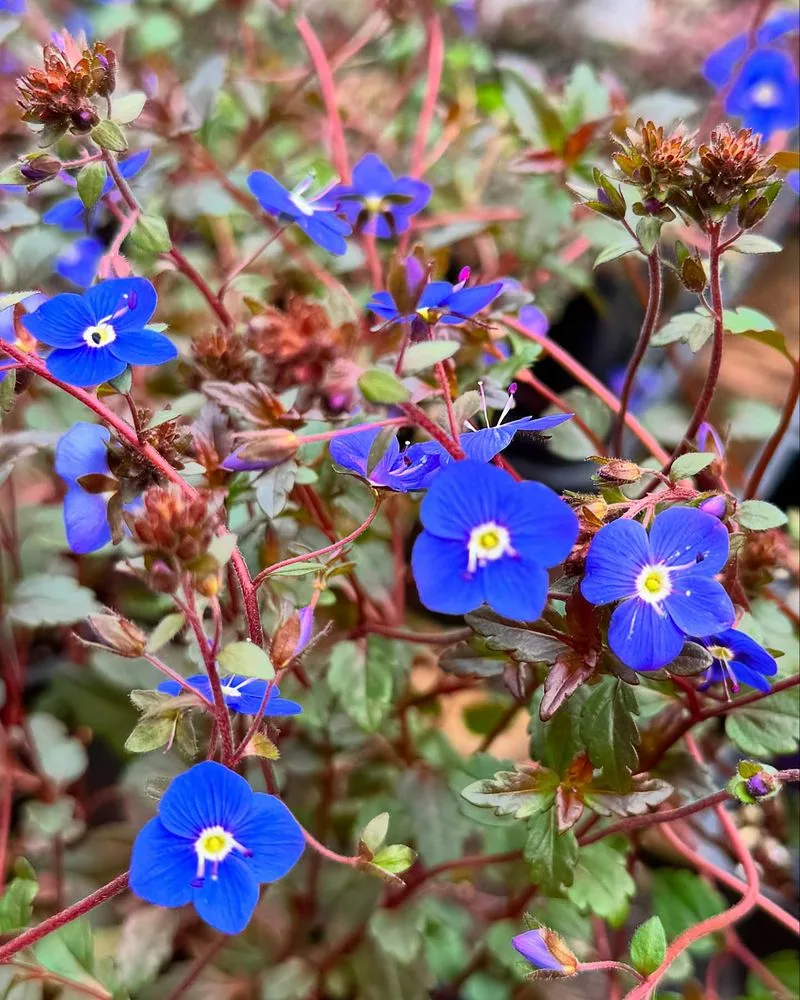
Veronica ‘Georgia Blue’ brings a splash of color with its vibrant blue flowers and dark green foliage. This low-growing perennial cascades beautifully over garden walls or rocks.
Preferring sunny spots, it thrives in well-drained soil, requiring little maintenance. Its early spring blooms attract butterflies, adding life and movement to gardens.
This plant offers a stunning visual impact, enhancing garden aesthetics. Veronica ‘Georgia Blue’ is not just a decorative ground cover; it’s a lively addition that celebrates the coming of spring.
Lamb’s Ear
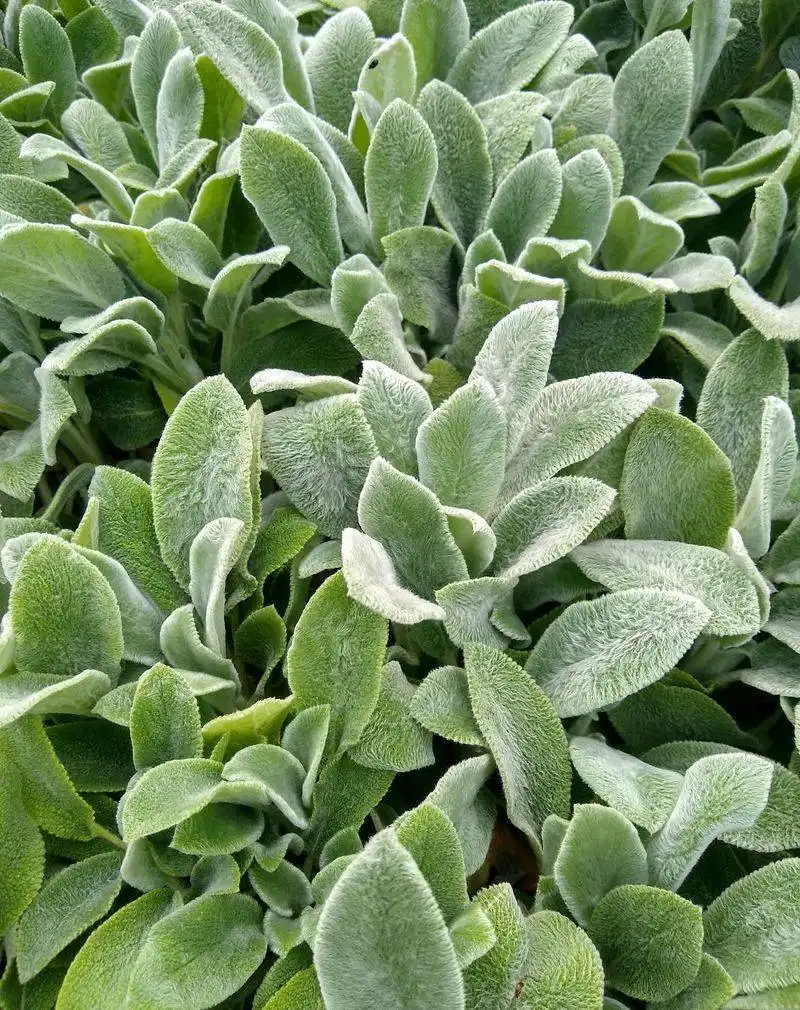
Lamb’s Ear, named for its soft, fuzzy leaves, adds a tactile element to gardens. Its silver-green foliage and purple flower spikes create a striking visual contrast.
Ideal for sunny, well-drained areas, it forms a dense mat that suppresses weeds. Lamb’s Ear’s unique texture and appearance make it a favorite for sensory gardens.
This perennial’s resilience and low water needs make it an eco-friendly choice. Beyond its beauty, Lamb’s Ear adds a whimsical touch to landscapes, reminding us of nature’s diversity and creativity.

